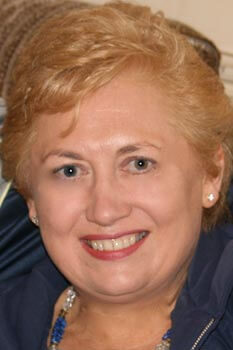The country’s first comprehensive web enabled tool – Health Intelligence Ireland – which has been developed by the HSE’s National Intelligence Unit, will assist health managers and policy makers to rapidly and simply inform their decision making on the most appropriate location for staff and services, writes Maureen Browne.

The country’s first comprehensive web enabled tool – Health Intelligence Ireland – which has been developed by the HSE’s National Intelligence Unit, will allow health managers and policy makers to rapidly and simply inform their decision making on location, staff and services and to instantaneously pinpoint all emergency services and personnel in the event of a major disaster.
This new system grew out of Health Atlas Ireland, which was seed funded by the HRB. It represents a major breakthrough in the analytical power of the HSE and should make a major contribution to the development of safe, quality health services. It allows access for professional users for the first time to vast amounts of existing data – much of it extremely complex and previously locked in untapped silos. It also allows the local user to analyse it in a way that makes real health intelligence accessible to all.
The system has been developed by a small HSE public health team, led by Dr. Davida De La Harpe, Assistant National Director Health Intelligence and Dr. Howard Johnson, Consultant in Public Health Medicine with the HSE, who is the project lead. They are working in co-operation with the DoH&C, DCU, RCPI, NUI Maynooth, the CSO, OSI, the RSA and many other agencies.
It allows access for professional users for the first time to vast amounts of existing data – much of it extremely complex and previously locked in untapped silos
“The development of Health Intelligence Ireland is driven by the priorities of the day, is clinically led, uses clinical terminology (we speak about patients rather than clients and quality assurance rather than performance) and is designed to analyse complex data and display simple intelligence of real value,” says Johnson. “We see our job as enabling the analysis of information relevant to the Department of Health & Children, the HSE, RDOs, hospital consultants and GPs and allowing them to display the information simply, but powerfully. Up to now the problem was that there were islands of hidden information which were difficult to access, difficult to analyse, with very rough geographical coding and the results were usually poorly displayed. Indeed previously much of this type of work was outsourced at significant cost, perhaps repeatedly for different but similar projects and, at the end of the day, there was little internal HSE learning.

In 2004, the HSE competed for a HRB grant and, following a European tender, Siemens Ireland in partnership with the Irish software company OpenApp was selected to work on the project. OpenApp subsequently won the ongoing framework contract to evolve the system. While there are modest ongoing costs for maintenance and support, and OSI licences and GeoDirectory licences, the system itself runs solely on opensource software which means zero software licence costs but with the potential of great flexibility and adaptability into the future. The HSE “owns” the entire system, can make changes without reference to others and the result is an outstanding example of an excellent value for money project.
The system encompasses a wide range of national data bases – census data, HIPE, Primary Care Reimbursement prescribing data, road accident data and service directory elements such as the location, addresses and contact details of hospitals, GPs, health centres, primary care teams, emergency services, pharmacies, dentists and nursing homes. The adoption by Government of a location specific postal zip code would allow the analysis of data to a very local area, so essential for service planning and epidemiology. Further phases may include financial, HR and other data to enable the multidimensional viewing of hospitals and primary care areas for example, in terms of their relativity in budgets, staffing, population and patient demands trended over time.
There are very strong governance arrangements in place and statistical rather than identifiable data are used to display clinical activity and patterns.
There are two separate modules dedicated to the public – the Map Centre (see hse.ie) giving information on the location, address and contact details of GPs, health centres, primary care teams, hospitals, nursing homes and dentists. Health professionals and the public can make suggestions to the Service Directory to update such details – the suggested edits are moderated by the HSE and updates can be made promptly. The HSE, in partnership with the Road Safety Authority, has also developed a dynamic way of displaying road collision patterns and locations – see Collision Stats on rsa.ie.
Up to now the problem was that there were islands of hidden information which were difficult to access, difficult to analyse, with very rough geographical coding and the results were usually poorly displayed
De La Harpe explains that Health Intelligence Ireland can analyse data in a very deep way whether it’s HIPE or any of the other databases included. For example, the system can show a “footprint” for each hospital for specified parameters. While a hospital might think it cares for all the patients with a particular diagnosis from all surrounding areas, this is not always so and the true pattern can only be revealed by the simultaneous analysis of the patient flows from all the neighbouring hospitals.
Such mapping analyses greatly help in informing decisions about where services should best be located to provide maximum population coverage. The system can take travel time and distance into account and potential hospital and primary care service “black spots” or overlaps are readily shown, and the impact of service relocation can be anticipated. The system has been used to inform decisions about optimum locations of cardiac, cancer and emergency department services. Given the fact that such analyses can be carried out openly in front of the interested parties, much of the mystique and unnecessary politics can be easily and elegantly removed from the debate.
“Health Intelligence Ireland has been used to analyse the balance of GP provision in the context of the local population” says Johnson. “The maps clearly show current primary care black spots and also the impact of GPs retiring in the next decade” says Johnson. “We have also helped the ICGP to examine the location of training practices and to target deprived areas for such services.”
Health Intelligence Ireland can display flood risk areas and the locations of HSE and other services. The Ezone (emergency) module was used in the recent major fire in Kerdiffstown, Co. Kildare. By simply keying in the wind direction and plume angles and distances, lists of services (by name and contact details), population and business and residential addresses within the path of the smoke plume can be displayed within minutes. Such data is invaluable for interagency collaboration in tackling environmental incidents.
The Health Intelligence Ireland infrastructure and analytical and display capacity, in partnership with the RCPI and HSE ICT, is also helping providers under agreed information governance arrangements to quality assure services by displaying relative local or national comparison between peer groups and with internationally recognised quality indicators. “This approach can be applied to any specialty,” says De La Harpe. “We hope that the different services in the country will adopt a common mechanism to allow clinicians, the HSE and the Department of Health & Children to assure the work of all their domains in a common manner and so promote better patient care in a bottom up and top down approach. The local hospital can run in depth analysis in close to real time, while the College can see a national overview. It is also intended to allow clinicians to immediately view data of their own cases meeting specified criteria and hence to easily complete the in-house quality assurance/clinical audit process.

